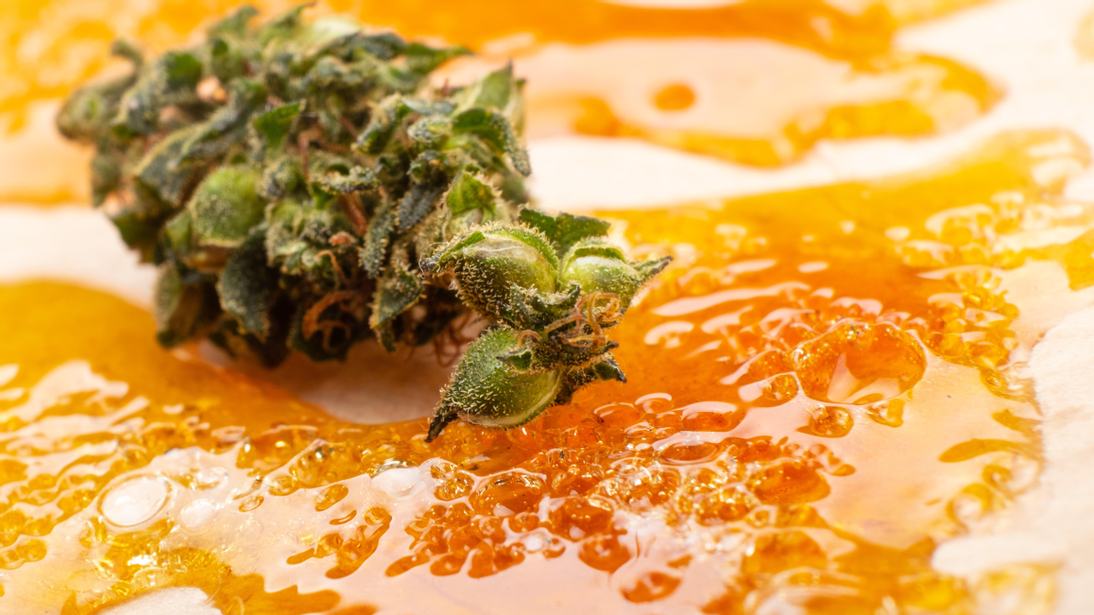Rosin vs. Resin - What's the Difference?
Read more on what makes these two extraction processes so unique.

Stroll through your average dispensary menu, and you’ll certainly come across two terms often used to describe cannabis concentrates, vape pens and edibles pretty frequently: rosin and resin. No, they’re not misspellings, but two unique extraction processes that bring their own unique qualities to the cannabis product. As such, they’re extracted differently and have their own unique effects to give to the cannabis lover. These distinctions are especially important to the medical patient, who may need the cleaner extract that rosin generally provides, but if you’re more interested in a specific effect, you may want to sample from a greater continuum. By knowing more about how both are made, consumers can make far better choices when it’s time to make a purchasing decision.
Cannabis Resin
Before the Cambrian explosion of concentrates in the earlier half of this century, cannabis resin was where the market started, particularly with hashish, an ancient and venerable product you can still find in dispensaries today. Cannabis resin is made by extracting the resinous trichomes from the cannabis plant, which contain the cannabinoids and terpenes that give the plant its unique aroma, flavor, and effects. The resin can be extracted by sieving or pressing the plant material, or by using solvents like alcohol or butane.
Resins, of course, are not unique to cannabis plants. They pop up in commercial products such as varnishes, adhesives and food ingredients, such as glazers, as well — another reason why cannabis resin is versatile enough to end up in concentrates and edibles alike.
There are several different types of cannabis resin, each with its unique properties and effects. The most common types of cannabis resin include:
Traditional Hashish: This is the most basic form of cannabis resin and is made by sieving or pressing the trichomes from the cannabis plant. Traditional hashish is typically dark brown or black in color and has a soft, crumbly texture.
Bubble Hash, aka Ice Water Hash: Bubble hash is a more refined form of cannabis resin that is made using ice water to separate the trichomes from the plant material. The resulting resin is light brown or yellow in color and has a more granular texture than traditional hashish.
Dry Sift, aka Kief: Similar to traditional hashish, dry sift is made by using a screen to sift the trichomes from the plant material. However, the result is not heated together, but instead is left in powder form. The resulting resin is light brown or yellow in color.
What’s the Deal with Live Resin?: Resin is resin, and any of the aforementioned resin production types can be applied to live resin. The difference is that the plants used for live resin are frozen immediately after harvest, and skip the usual drying and curing and trimming phases most cannabis buds undergo. This preserves more of the terpene content and flavor, which can be drastically compromised during cannabis processing.
Cannabis Rosin
In short, rosin derives from cannabis resin. Rosin is made by applying heat and pressure to the cannabis plant, which causes the resinous trichomes to release their oils. Importantly, rosin is made without applying chemicals such as butane to the plant, unlike certain forms of resin concentration, making it more desirable for some medical patients — just as long as the resin the rosin was extracted from wasn’t extracted using those chemicals.
Similar to resin, there are many types of non-cannabis commercial rosin made. It’s often used on stringed instruments, such as violins or cellos to help the instrument’s string vibrate more clearly. It’s also used by athletes such as baseball pitchers to keep a better grip on the ball, as well as for adhesives and varnishes, similar to resin.
Rosin can be extracted from both flower, hash and even dry sift using a device called a rosin press. Its consistency can range from sticky and gooey for flower to powdery for dry sift and crumbly for hash. And just like resin, rosin can be made from “live” plants as well, so that more of the flavors and terpenes of the plant are preserved.
Expect to pay more for live resin and rosin, since they are both truly connoisseur products that requires more resources to make. However, each of these preparations, from hash to dry sift, possess their own unique flavors and qualities. Exploring which ones work best for you is half the fun.
